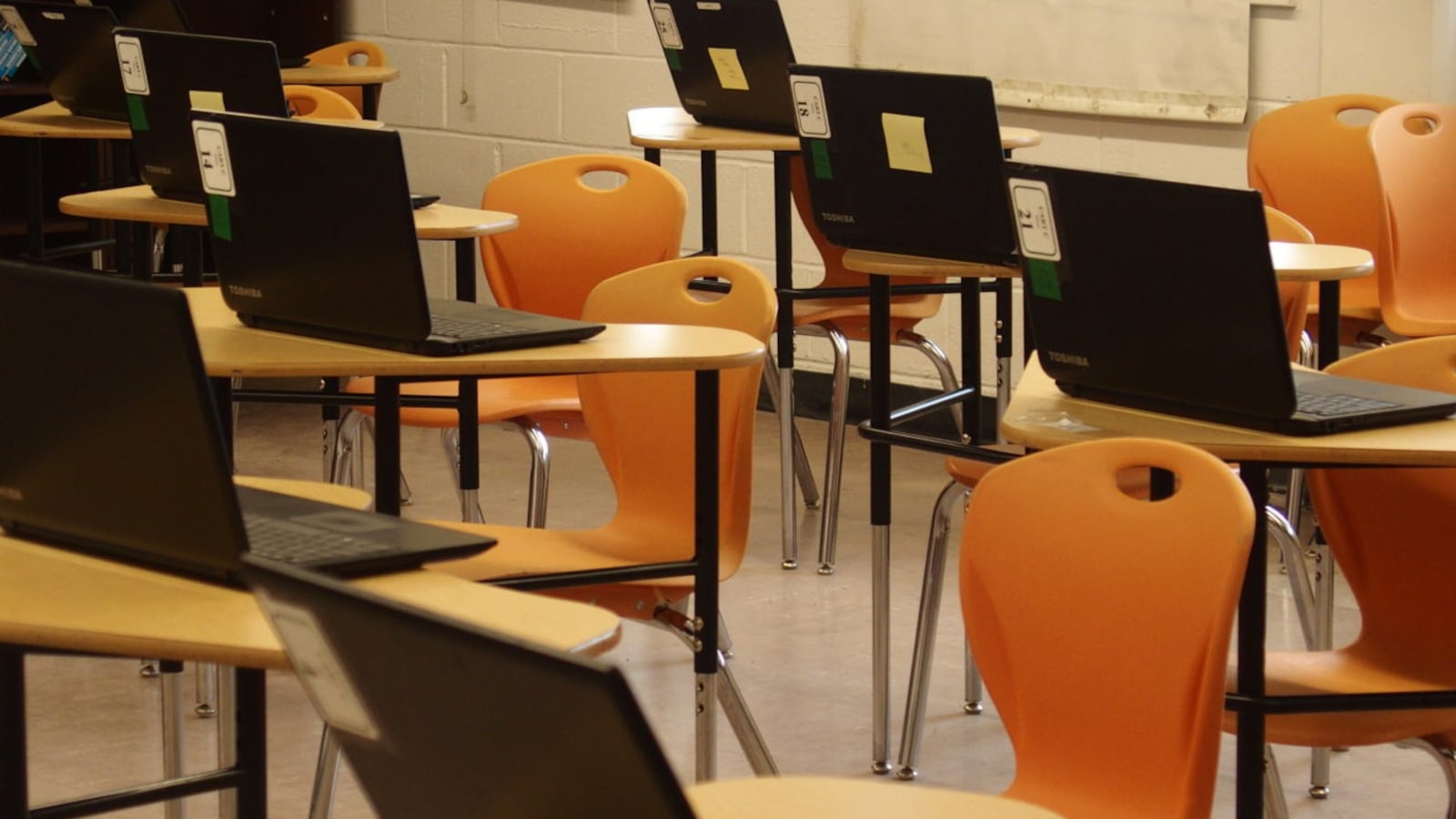After enrollment at an online-only program in a small rural district shot up by hundreds of students last year — throwing off school funding estimates in the process — lawmakers were left with a big question: How many of these district-based programs are out there?
For the first time, a report from the state Department of Education has the answer: 28 programs serving more than 5,000 students.
“It’s certainly growing,” said Gordon Hendry, the state board of education member who chaired the state’s committee on virtual schools. “It just underscores the need for us to be on top of this issue.”
The growth in online education in Indiana has been steep, according to the first-of-its-kind report. In 2016-17, about 8,700 students spent more than half their time learning online, either in virtual charter schools or online-only programs in other public schools. This year, 18,690 do. The vast majority of those students are split between the state’s five full-time virtual charter schools, but the number being educated virtually in traditional public school districts has grown most quickly — more than tripling to 5,040 students this year.
The programs present a unique challenge to state leaders because they are nearly impossible to track through existing state data. And because the programs are not always separate schools, they don’t report their own test scores, enrollment, or receive state grades — meaning the public can’t judge their performance. In an effort to learn more, lawmakers passed a law last year that requires the state Department of Education to survey districts each year about the number of online-only programs.
Read: After flying under the radar, school districts’ online programs attract attention — and scrutiny
There’s still a caveat — the department says in the report that all information is self-reported, and in most cases is “not able to be verified or corroborated.” But the report gets the state closer to understanding how virtual education is spreading inside traditional public school districts. Virtual charter schools and charter schools with virtual programs serving some students are also included in the report.
“The use of virtual courses is widespread across schools in Indiana,” the report said. “It is possible there were programs which went unreported as well.”
The structures and goals of these programs vary widely. Some exist to serve just a handful of students who might need homebound services because of medical issues or evening classes as they balance jobs. In others, students learn exclusively online and might never physically attend their school. The curriculum, too, varies. Some districts use their own curriculum materials delivered through an online platform, while others partner with big national online learning providers, such as K12 Inc., Edgenuity, Apex, and Pearson.
The Frankton-Lapel school district, a 3,100-student district near Anderson, said its program was designed to hold onto students who might otherwise attend a virtual charter school and leave the district — which would mean the district loses funding for that student. Currently, 19 students use the online-only program.
“We have lost about 10 students to virtual schools each of the past several years,” the district told the state in the survey. “We decided to utilize our resources to meet their needs in a non-traditional setting.”
The report lacks specific information on how well most of these schools and programs educate students. Separate schools, such as virtual charter schools or ones that operate independently of brick-and-mortar schools within a district, can receive state and federal accountability grades.
But for programs that are not separate, schools typically do not — and are not required to — report test score data or graduation data for those students. That information is rolled into that of a brick-and-mortar school.
Hendry said going forward, there should be more information included in the annual report on the programs’ enrollment policies, performance, and operations.
“It’s a little bit of a mystery it seems,” he said of the programs.
Recently, the state board of education, in its recommendations to lawmakers, suggests requiring schools to break out their virtual students into separate schools for data purposes once a certain number of enrolled students is met. It’s not clear yet how many virtual students a district would have to serve before the state board’s proposed rule would kick in.
The recommendations, which nearly all board members supported, also would propose the state send less money to districts for their virtual students — making it match the 90 percent rate at which virtual charter schools are funded. Virtual charter school leaders and educators who oversee district-based programs have said they oppose the measure.
Lawmakers are expected to consider these recommendations and more during next year’s legislative session, which begins in January.
Online learning has been controversial in Indiana and across the country. Researchers have reported that most students learning in full-time virtual settings are not as academically successful as their peers in traditional schools.
Although online-only learning can be beneficial for some students who need extra flexibility, researchers say, it requires a level of support at home that oftentimes isn’t present. In Indiana, a Chalkbeat investigation revealed widespread issues at one of the state’s largest virtual charter schools in 2017, including having too few teachers and the lowest graduation rate of any public school in the state.

